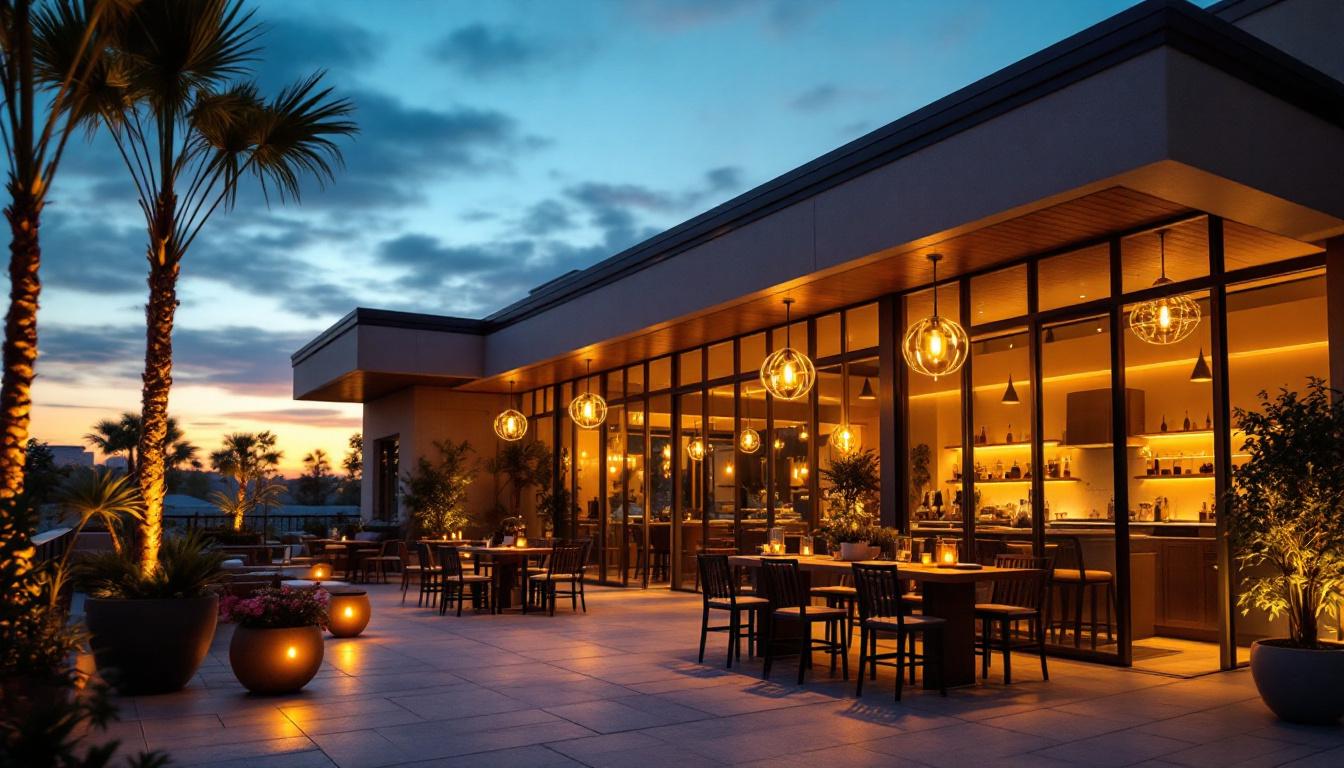
As educational environments continue to evolve, the importance of effective lighting in classrooms has come to the forefront. lighting contractors play a crucial role in designing and implementing lighting solutions that enhance learning experiences. However, like any aspect of construction and design, there are both advantages and disadvantages to consider when it comes to classroom lighting. This article delves into the pros and cons of classroom lights, providing valuable insights for lighting contractors.
Classroom lighting is not merely a functional necessity; it significantly impacts students’ ability to learn and engage. Proper lighting can enhance concentration, reduce fatigue, and create a conducive environment for both teaching and learning. Lighting contractors must understand the unique requirements of educational spaces to provide effective solutions.
Research has shown that well-lit classrooms can improve student performance and overall well-being. Natural light, in particular, has been linked to increased focus and mood enhancement. Lighting contractors should consider the integration of daylighting strategies, such as windows and skylights, to maximize the benefits of natural light.
Additionally, the use of adjustable lighting systems can cater to various activities within the classroom. For instance, bright lighting may be necessary for reading and writing tasks, while softer lighting can create a relaxed atmosphere for group discussions. Understanding these dynamics allows lighting contractors to tailor solutions that meet the specific needs of educators and students alike. Furthermore, the incorporation of color temperature adjustments can play a vital role in influencing student alertness and creativity. Cooler light temperatures can invigorate students during morning lessons, while warmer tones can help wind down the day, making transitions smoother and more effective.
Lighting contractors must also navigate various standards and regulations that govern classroom lighting. These standards often dictate minimum illumination levels, energy efficiency requirements, and safety considerations. Familiarity with these guidelines ensures that lighting installations not only enhance the learning environment but also comply with legal requirements.
In addition to adhering to regulatory standards, lighting contractors should also stay informed about advancements in lighting technology. The shift towards LED lighting, for example, offers significant benefits in terms of energy efficiency and longevity. By utilizing smart lighting systems that can adjust automatically based on occupancy and natural light levels, classrooms can not only reduce energy costs but also provide a more responsive learning environment. This adaptability is crucial in modern educational settings where the needs of students and teachers can vary greatly throughout the day.
“`html
When considering classroom lighting, several advantages stand out. These benefits can greatly influence the decisions made by lighting contractors and their clients.
One of the most compelling reasons to invest in quality classroom lighting is its potential to improve student performance. Studies have indicated that students in well-lit classrooms tend to achieve higher test scores and exhibit better behavior. This improvement can often be attributed to reduced eye strain and fatigue, allowing students to remain engaged for longer periods.
Moreover, appropriate lighting can support various learning styles. For example, students who thrive in bright environments may perform better with higher illumination levels, while others may benefit from softer, more ambient lighting. This flexibility allows educators to create a more inclusive learning atmosphere. Additionally, natural light has been shown to have a positive impact on mood and concentration, which can further enhance learning outcomes. By incorporating windows and skylights into classroom designs, schools can harness the benefits of daylight, creating a more dynamic and stimulating environment for students.
Modern lighting technologies, such as LED fixtures, offer significant energy efficiency advantages. Lighting contractors can help schools reduce their energy consumption and operational costs by recommending energy-efficient solutions. These technologies not only lower electricity bills but also contribute to sustainability efforts, aligning with the growing emphasis on environmental responsibility in educational institutions.
Furthermore, many energy-efficient lighting systems come with longer lifespans, reducing the frequency of replacements and maintenance. This aspect is particularly appealing to school districts that often operate under tight budgets. In addition to cost savings, the use of smart lighting systems can further enhance energy efficiency. These systems can be programmed to adjust brightness based on the time of day or occupancy, ensuring that energy is not wasted when classrooms are unoccupied. Such innovations not only promote sustainability but also instill a sense of responsibility among students regarding energy conservation practices.
Classroom lighting can also play a vital role in the overall aesthetics of the learning environment. Thoughtfully designed lighting can enhance the visual appeal of a classroom, making it a more inviting space for students and teachers alike. Lighting contractors can explore various fixture designs, colors, and placements to create an atmosphere that promotes creativity and inspiration.
Incorporating decorative elements, such as pendant lights or wall sconces, can also add character to the classroom. This attention to detail can significantly impact students’ perceptions of their learning environment, fostering a sense of pride and ownership in their space. Furthermore, the use of color temperature in lighting can influence the mood of the classroom. Warmer tones can create a cozy and welcoming atmosphere, while cooler tones may enhance focus and alertness. By strategically selecting and layering different types of lighting, educators can craft an environment that not only supports academic success but also encourages social interaction and collaboration among students.
“`
While the benefits of classroom lighting are numerous, there are also challenges and drawbacks that lighting contractors must consider. Understanding these cons can help contractors make informed decisions and provide comprehensive solutions for their clients.
One of the primary concerns associated with upgrading classroom lighting is the initial investment required. High-quality fixtures and advanced lighting systems can come with a hefty price tag, which may deter some school districts from pursuing these improvements. Lighting contractors must be prepared to justify the long-term benefits of investing in quality lighting solutions to clients who may be hesitant due to budget constraints.
Additionally, the installation process may require temporary disruptions to the learning environment, which can be a significant concern for schools. Contractors should work closely with school administrators to minimize disruptions and develop a phased approach to installations whenever possible.
While modern lighting solutions are often designed for longevity, they still require regular maintenance to ensure optimal performance. This includes cleaning fixtures, replacing bulbs, and addressing any technical issues that may arise. Lighting contractors must educate school staff on the importance of maintenance and provide guidance on best practices to prolong the lifespan of the lighting systems.
Moreover, as technology continues to evolve, lighting systems may become outdated or require upgrades to remain efficient. Contractors should consider the long-term implications of their lighting solutions and recommend systems that are adaptable to future advancements.
Improperly designed lighting can lead to distractions that hinder the learning process. For instance, glare from windows or overhead fixtures can create uncomfortable conditions for students and teachers. Lighting contractors must be vigilant in their design choices, ensuring that lighting solutions are not only effective but also conducive to concentration and focus.
Additionally, the choice of color temperature can impact students’ moods and energy levels. While cooler temperatures may promote alertness, they can also lead to feelings of anxiety if not balanced with warmer tones. Understanding the psychological effects of lighting is crucial for contractors aiming to create optimal learning environments.
To navigate the complexities of classroom lighting effectively, lighting contractors should adopt best practices that enhance their service offerings and client satisfaction.
Before embarking on a lighting project, contractors should conduct thorough needs assessments. This involves engaging with educators and administrators to understand their specific requirements and preferences. By gathering input from those who will be using the space, contractors can design lighting solutions that truly meet the needs of the classroom.
Additionally, assessing the existing lighting conditions is essential. This includes measuring illumination levels, identifying problem areas, and evaluating the overall layout of the classroom. A comprehensive assessment lays the groundwork for informed decision-making and effective design.
Embracing technology can significantly enhance the effectiveness of classroom lighting solutions. Smart lighting systems, which allow for customizable settings and automated controls, can provide flexibility for various teaching methods and activities. Contractors should explore options that integrate with existing classroom technology, such as projectors and interactive whiteboards, to create a seamless learning experience.
Furthermore, incorporating sensors that adjust lighting based on occupancy can lead to energy savings and improved efficiency. These advancements not only benefit the environment but also align with the growing trend of smart building technologies in educational institutions.
The field of lighting design is constantly evolving, with new technologies and trends emerging regularly. Lighting contractors should stay informed about the latest developments in classroom lighting, including advancements in energy efficiency, fixture design, and smart technology. Attending industry conferences, participating in training sessions, and networking with peers can provide valuable insights that enhance a contractor’s expertise.
Additionally, understanding the changing needs of educational environments is crucial. As teaching methods evolve, so too do the requirements for classroom lighting. Contractors who remain adaptable and open to innovation will be better positioned to meet the demands of their clients.
Classroom lighting is a critical component of creating effective learning environments. While there are undeniable advantages to investing in quality lighting solutions, there are also challenges that lighting contractors must navigate. By understanding the pros and cons of classroom lighting, contractors can provide informed recommendations that enhance the educational experience.
Through careful planning, adherence to best practices, and a commitment to staying informed on industry trends, lighting contractors can play a pivotal role in transforming classrooms into spaces that foster learning, creativity, and engagement. The future of education relies on adaptable and innovative lighting solutions that meet the diverse needs of students and educators alike.
“`html
Ready to elevate your classroom lighting projects with quality and affordability? Look no further than LumenWholesale. Our spec-grade lighting products are designed to meet the diverse needs of modern educational environments, ensuring you can create spaces that foster learning and engagement. With unbeatable wholesale prices and free shipping on bulk orders, you can trust LumenWholesale to provide the best value without compromising on performance. Wholesale Lighting at the Best Value is just a click away. Experience the difference with LumenWholesale today.
“`

Discover the essentials of workshop lighting from a contractor’s perspective.

Discover how the innovative wire puller tool can revolutionize your lighting projects by boosting efficiency and reducing labor time.

Discover expert insights on overcoming common challenges in patio ceiling lighting projects.

Discover the essential insights lighting contractors need when considering LED replacements for can lights.